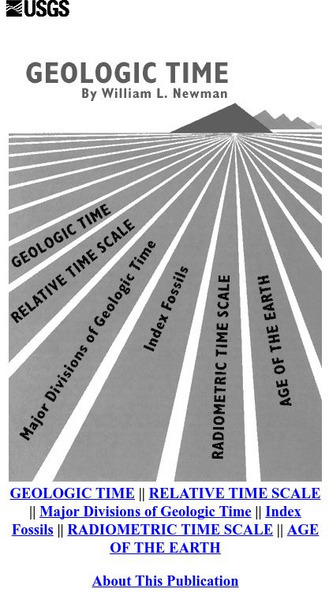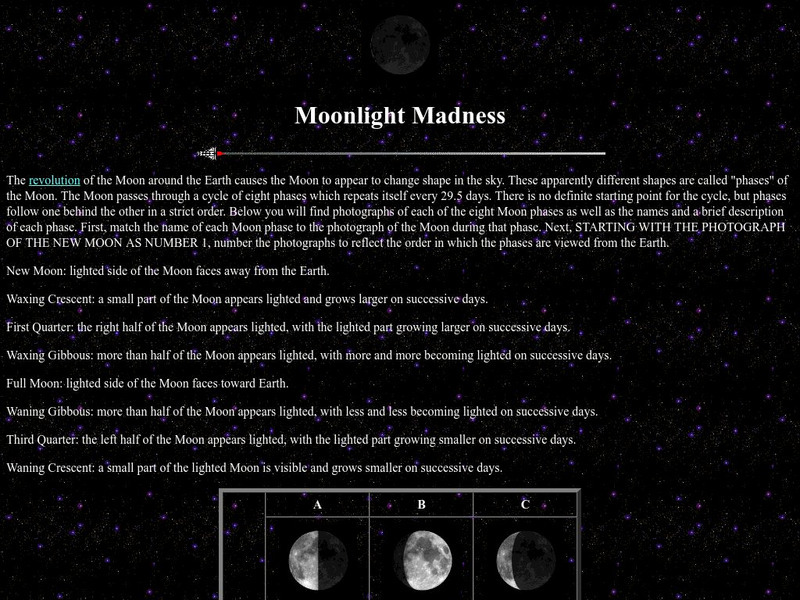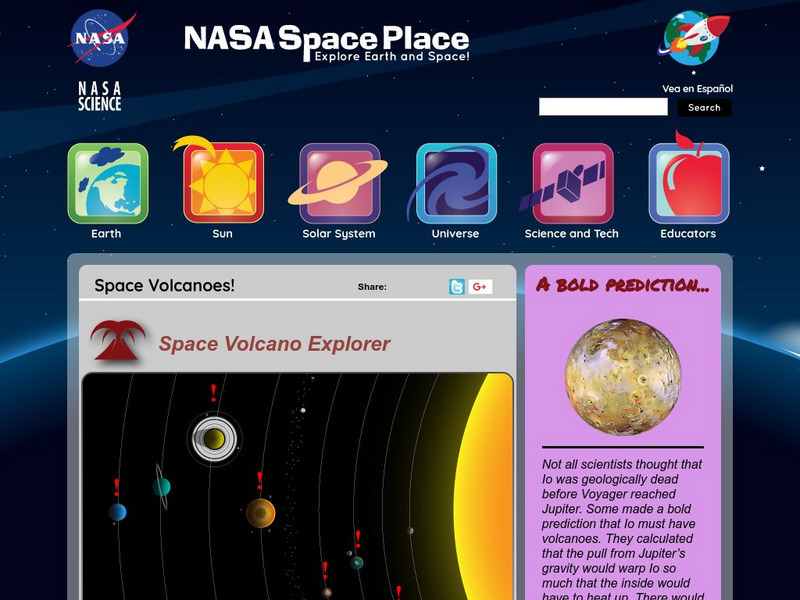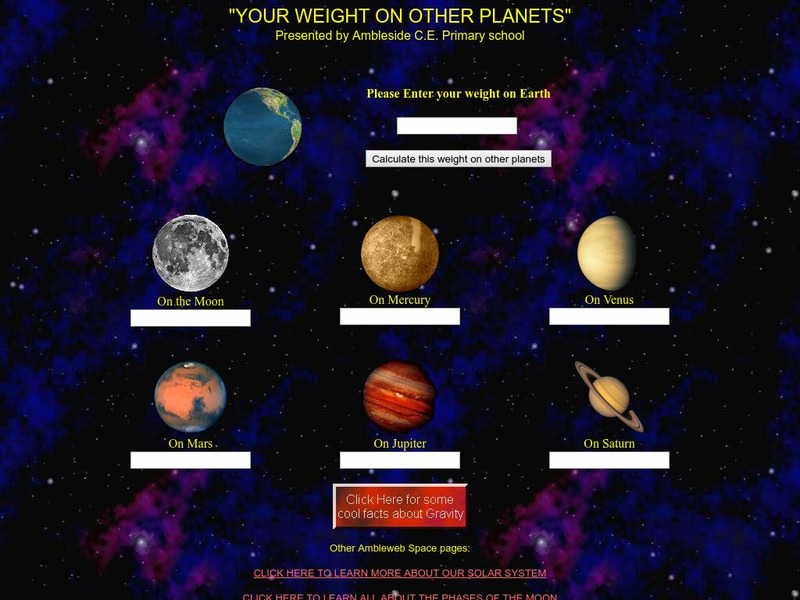NASA
Nasa Star Child: What Are the Phases of the Moon?
This page provides basic information about the causes of the phases of the Moon. A good diagram shows the lit portion of the Moon as seen from Earth through one complete Lunar cycle.
NASA
Nasa Star Child: Space Travel (Level 1)
Learn about the history of space travel. Audio content is included as well as vocabulary words linked to a glossary of terms.
NASA
Nasa Star Child: The Solar System
Discover information about parts of the Solar System, along with definitions just by clicking on highlighted vocabulary terms. Be sure to try the "Solar System Activities" to review the material from these pages.
Merriam-Webster
Merriam Webster: Dictionary Illustration: Solar Eclipse
Basic diagram of a solar eclipse illustrates the relative positions of the sun, moon, and earth.
NASA
Nasa Star Child: Star Child
StarChild from NASA defines and describes the Solar System in a simple and easy-to-understand manner. The website is broken down into two versions for the student, grade school and junior high.
US Geological Survey
Usgs: Geologic Time
This large U.S. Geological Survey site offers a look at the age of the earth, how radiometric dating is used to calculate it, the major divisions of geologic time, and the classification and use of fossils.
NASA
Nasa Star Child: Moonlight Madness
The revolution of the Moon around the Earth causes the Moon to appear to change shape in the sky. These apparently different shapes are called "phases" of the Moon. The Moon passes through a cycle of eight phases which repeats itself...
NASA
Nasa: Eclipses
The periodicity and recurrance of eclipses is governed by the Saros cycle, a period of approximately 6,585.3 days (18 years 11 days 8 hours). It was known to the Chaldeans as a period when lunar eclipses seem to repeat themselves, but...
Fourmilab Switzerland
John Walker: Earth and Moon Viewer and Solar System Explorer
This website provides numerous images of the Earth and moon, shown from various vantage points.
NASA
Nasa: Space Place: Space Volcanoes!
Click and explore the solar system to discover where volcanoes can be found, on planets and moons.
Utah Education Network
Uen: Patterned Paragraphs
Students will learn about the importance of including specific details when writing. Students will watch the teacher model "How to Make a Peanut Butter Sandwich." Then student will replicate the process for writing with specificity as...
Read Works
Read Works: Sunlight in the Night
[Free Registration/Login Required] An informational text about moonlight and where it comes from. A question sheet is available to help students build skills in reading comprehension.
NASA
Nasa Space Science Data Archive: Neptunian Satellite Fact Sheet
A pair of small tables of data that contain just about everything known about the moons of Neptune.
Other
Hermit.org Science: Mechanics of Lunar Eclipses
An good site for information about Lunar Eclipses, with excellent diagrams. This page has the best viewing graphics, but a printable page can be easily selected.
Other
Astro Mia: Tierra, Sistema Solar Y Universo
This site is a good resource to study Astronomy. It has six sessions: the Universe, the solar system, the earth and the moon, history of Astronomy, articles, famous astrologers and a glossary.
Physics Aviary
Physics Aviary: Practice Problems: Jolly Gas Giant Problem
Students must calculate the mass of a planet based on the orbital motion of the moon going around the planet.
Physics Classroom
The Physics Classroom: Circular and Satellite Motion: Gravitational Fields
Students discover the Law of Universal Gravitation by changing the masses of planets and moons and the distance that separates them.
NASA
Nasa: Lunar Prospector: Lunar Eclipse
What happens to a spacecraft that relies on sunlight to power its batteries when it travels through the Earth's shadow? The Lunar Prospector survived several Penumbral and Umbral eclipses. Resource includes a link to a video that...
Ambleside Church of England Primary School
Ambleside c.e. Primary School: Your Weight on Other Planets
Students enter their weight here on Earth, and find out how much they would weigh on the moon and other planets.
US Geological Survey
Us Geological Survey: Saturn Satellites
This resource provides images of Saturns satellites.
US Geological Survey
United States Geological Survey: Apollo Mission Lunar Panoramas
View interactive panoramic views taken by Apollo missions 11, 12, 14, 16 and 17. You can zoom in on each panoramic to see more detail.
Other
Lunar and Planetary Institute: Moon Flip Book [Pdf]
Hands-on activity allows children to learn the phases of the Moon by creating their own flip book.
Read Works
Read Works: Article a Day Set: Time: Parts of a Day
[Free Registration/Login Required] ReadWorks provides numerous resources filled with informational articles. "Parts of a Day" provides information about the parts of a day: morning, afternoon, evening, and night. This passage is designed...





















